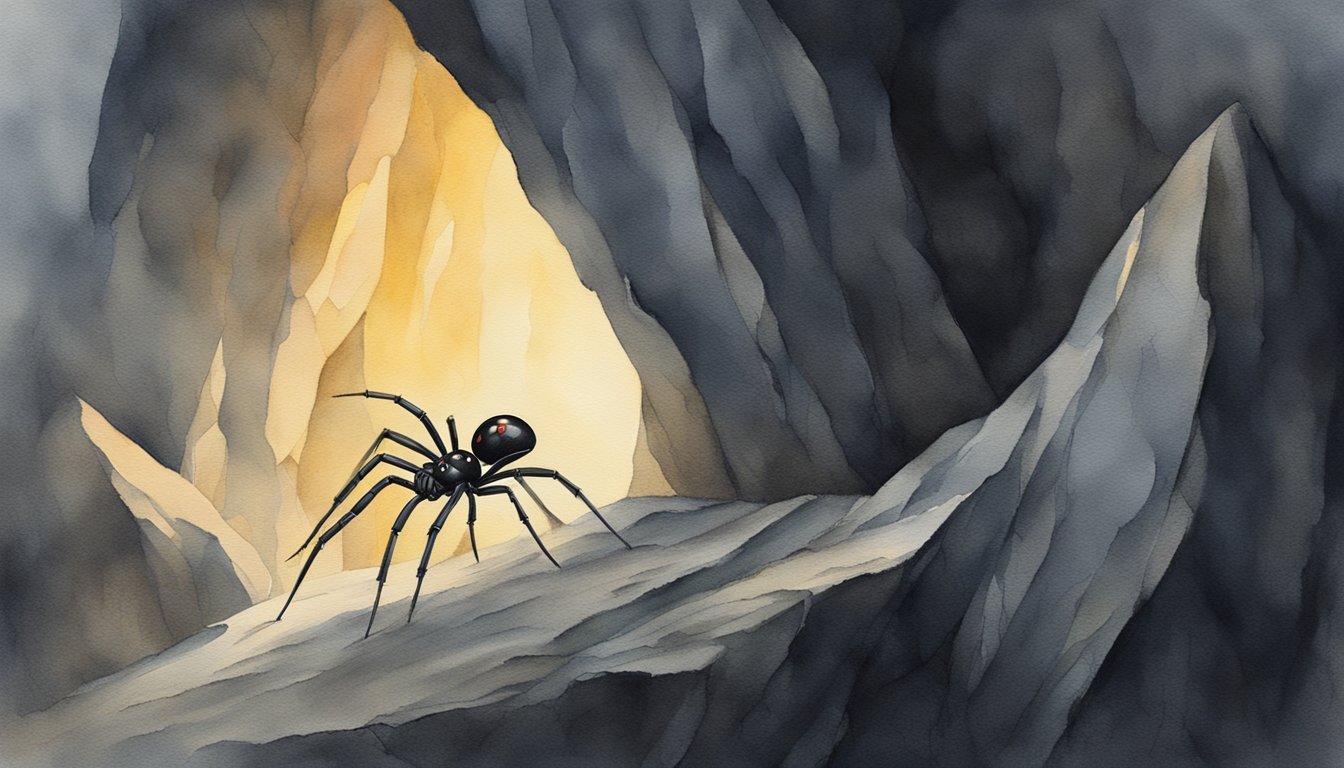Biology and Identification
The black widow spider, a member of the genus Latrodectus, is known for its potent venom and distinct markings. These spiders are easily identifiable by their shiny black coloring and the iconic hourglass-shaped marking on the abdomen. Understanding their biology and how to identify them is crucial due to their widespread habitat and potential health risks to humans.
Physical Characteristics
The most notable characteristic of black widow spiders is the shiny black coloration of the females, along with the red or sometimes orange hourglass-shaped marking on the underside of their abdomens. Females are significantly larger than males, with some females measuring up to 1.5 inches in size when including their leg span. Males are usually half the size of females and less distinguishable as they lack the prominent hourglass marking.
Species Variation
There are several species within the black widow genus that vary in appearance and distribution. The southern black widow (Latrodectus mactans), western black widow (Latrodectus hesperus), and northern black widow (Latrodectus variolus) are the three species commonly found in North America, each with slightly different markings. Other species like the red widow and the brown widow spider are related species of Latrodectus that can be identified by variations in their coloring and markings.
Distribution and Habitat
Black widow spiders have a wide distribution across the globe, found in regions such as North America, Australia, South America, and Africa. Their habitats range from urban areas to agricultural fields, where they tend to hide in sheltered, dry locations. The adaptability of black widow spiders to various environments helps them to thrive in diverse climates.
Behavior and Ecology

Black widow spiders, notable for their distinctive markings and potent venom, exhibit a range of behaviors that are intricately linked to their ecological niche. These spiders are adept at weaving webs not only for prey capture but also as a habitat and defense mechanism.
Feeding and Prey Capture
Black widows primarily consume insects which they capture using their webs. The web structure varies based on individual spiders and environmental conditions, with hungry black widows spinning denser webs to increase their chances of capturing prey. They use highly elastic silk to construct their webs, and the strength of this material allows them to capture much larger prey. Once the prey is ensnared, black widows use their venom, which contains alpha-latrotoxin and other compounds, to immobilize it before applying digestive enzymes to liquify the insides of the insect.
Reproduction and Lifecycle
Reproduction in black widow spiders involves complex mating rituals that can sometimes result in sexual cannibalism, where the female may consume the male after mating. Females produce egg sacs that contain numerous eggs, from which spiderlings hatch. These juveniles are highly independent and disperse through a process called ballooning, whereby they release silk to be carried away by the wind.
Survival and Defense Mechanisms
To avoid predation, black widows often play dead or drop from their webs when disturbed. Their potent venom serves as a primary defense mechanism against larger threats. However, it is a common misconception that their bites are frequently fatal to humans, as black widows often deliver dry bites without venom. In the event of a venomous bite, pain and muscle spasms can occur, but an antivenom is available and effective in treating serious cases.

